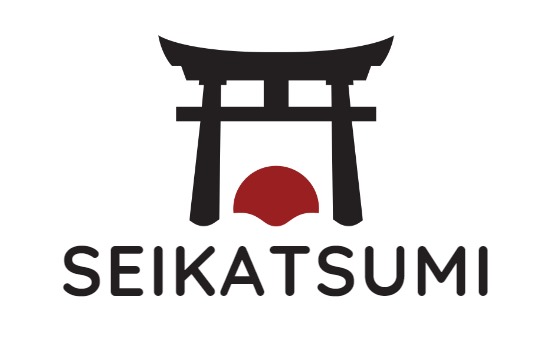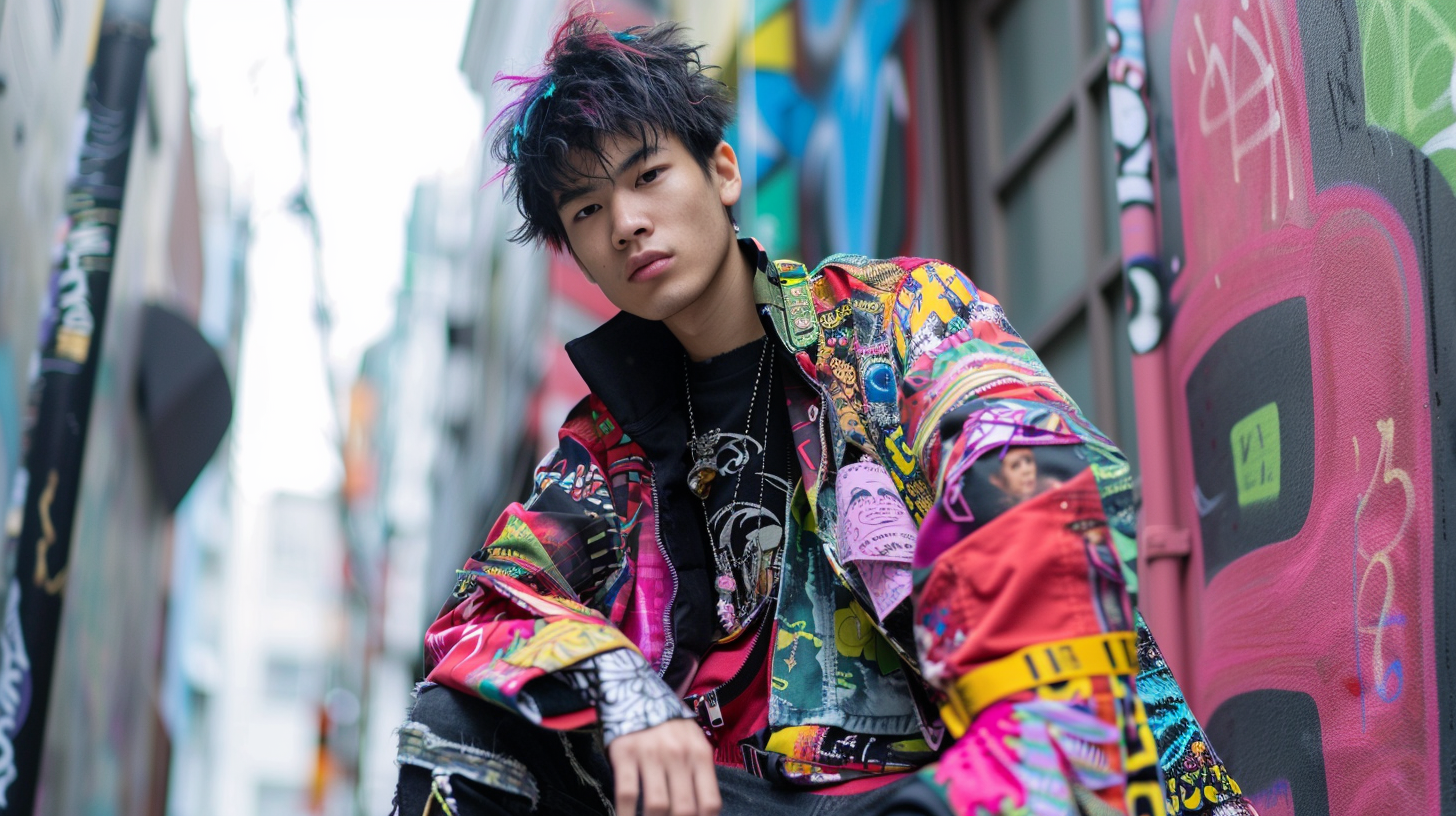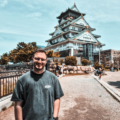Are you captivated by the bold and vibrant world of Harajuku male fashion? I am absolutely enamored with it!
I get how tough it can be to really understand and embrace such an avant-garde style. That’s precisely why I’ve delved deep into the Harajuku Male Fashion scene, uncovering the secrets behind those eye-catching outfits.
I’m overjoyed to guide you through the flamboyant and daring streets of Harajuku male fashion. It’s a realm where self-expression and creativity know no bounds, and every outfit tells a unique story.
So, what are you waiting for? Let’s embark on this colorful journey together and discover the art of Harajuku Male Fashion! 🙂
History of Harajuku Fashion
Harajuku fashion has been a staple of Tokyo’s fashion scene for decades. As a fashion district, Harajuku’s history goes back to the 1940s.
Over the years, Harajuku fashion has evolved into a unique blend of Japanese and Western styles.
Origins and Influences
Harajuku fashion first became prominent in the 1980s during the postwar Allied Occupation of Japan, when American soldiers and civilians lived in the area.
Local youths were curious about the difference in culture and style, and this was the time when various fashion subcultures took over the streets of the neighborhood.
These subcultures include the punk, rockabilly, and gothic styles.
Harajuku fashion is also influenced by Japanese street fashion, which has its roots in the 1970s.
The fashion subculture emerged from the streets of Tokyo and was characterized by its eclectic mix of styles and influences.
Today, Harajuku Male Fashion continues to be inspired by various subcultures and styles, including anime, manga, and cosplay.
Evolution Over Decades

Over the decades, Harajuku Male Fashion has evolved and changed. In the 1990s, the fashion district was characterized by the “Kawaii” style, which translates to “cute” or “adorable.”
This style was popularized by the “Lolita” subculture, which was known for its frilly dresses, lace, and pastel colors.
In the early 2000s, Harajuku fashion saw the rise of the “Visual Kei” subculture, which is characterized by its heavy makeup, androgynous look, and flamboyant style.
This subculture was popularized by Japanese rock bands and musicians.
Today, Harajuku Male Fashion continues to evolve and change. The fashion district is known for its unique blend of styles and influences, and it continues to be a hub for fashion enthusiasts from around the world.
Key Elements of Harajuku Male Fashion

Harajuku Male Fashion is known for its unique and bold style, and Harajuku male fashion is no exception.
As a fan of this fashion style, I’ve put together a list of key elements that are essential to achieving the Harajuku look.
Signature Clothing Items
One of the most recognizable aspects of Harajuku male fashion is the clothing. Some of the signature clothing items include oversized t-shirts, baggy pants, and denim jackets.
These items are often brightly colored or feature bold patterns and designs. Mixing and matching patterns and colors is a common practice in Harajuku fashion, so don’t be afraid to experiment.
Hey you! Are you interested in more fashion tips? Then be sure to check out our top articles! You definitely can’t miss it!
90s Japanese Fashion: A Nostalgic Trip Down Memory Lane 2024
Japanese Traditional Clothes Men: The Best Timeless Fashion Of Japan In 2024
30+ Japanese Minimalist Fashion Outfits: Simplicity and Elegance 2024
Popular Accessories
Accessories are a crucial part of Harajuku male fashion. Some of the most popular accessories include hats, sunglasses, and scarves.
These items are often oversized and feature unique designs. Wearing multiple accessories at once is also a common practice in Harajuku fashion.
Hairstyles and Makeup

Hairstyles and makeup are also important elements of Harajuku male fashion. Hair is often dyed bright colors, and hairstyles can range from spiky to messy to sleek.
Makeup is also used to enhance the overall look, with bold colors and designs being common.
Harajuku male fashion is all about being bold, unique, and creative.
By incorporating signature clothing items, popular accessories, and unique hairstyles and makeup, you can achieve the Harajuku look and stand out from the crowd.
Harajuku Fashion Subcultures
Harajuku fashion is known for its unique and creative styles that are often inspired by Japanese pop culture.
As a male fashion enthusiast, I am particularly drawn to the Harajuku subcultures that showcase bold and daring fashion choices.
Here are some of the most popular Harajuku fashion subcultures for men:
Visual Kei

Visual Kei is a subculture that emerged in the 1980s and is characterized by its flamboyant and theatrical fashion.
Visual Kei fashion often features heavy makeup, androgynous clothing, and elaborate hairstyles. Some popular Visual Kei fashion brands include h.NAOTO and Alice and the Pirates.
Visual Kei is a great choice for those who want to express themselves through fashion and break free from traditional gender norms.
Gyaru-O

Gyaru-O is a male version of the popular Gyaru subculture, which is known for its glamorous and feminine fashion. Gyaru-O fashion is all about looking stylish and confident, and it often features bold colors, flashy accessories, and tight-fitting clothing.
Some popular Gyaru-O fashion brands include Vanquish and Rady. Gyaru-O is a great choice for those who want to stand out and make a statement with their fashion choices.
Decora

Decora is a subculture that emerged in the 1990s and is characterized by its colorful and playful fashion.
Decora fashion often features brightly colored clothing, accessories, and hair, as well as lots of cute and quirky details. Some popular Decora fashion brands include 6%DOKIDOKI and Spank!.
Decora is a great choice for those who want to have fun with fashion and express their playful side.
Harajuku fashion subcultures offer a wide range of creative and unique fashion choices for men.
Whether you prefer the flamboyant and theatrical style of Visual Kei, the glamorous and confident style of Gyaru-O, or the colorful and playful style of Decora, there is a Harajuku subculture that will suit your fashion preferences.
Shopping Destinations in Harajuku
Harajuku is a shopping mecca that offers a wide range of options for fashion-conscious individuals.
If you are looking for male fashion in particular, Harajuku has a lot to offer. Here are some of the best shopping destinations in Harajuku that cater to male fashion.
Takeshita Street

Takeshita Street is a pedestrian-only street that is lined with small fashion boutiques selling all kinds of clothing.
From cosplay and Lolita fashion to reworked vintage clothing, you will find all the latest trends here.
This street is the star of the show for many visitors to the area. It is directly across from Harajuku Station, making it easy to find.
Cat Street

Cat Street is a trendy shopping street that links Harajuku and Shibuya. It is home to a variety of shops, including vintage clothing stores, streetwear boutiques, and high-end fashion stores.
Cat Street is a great place to find unique and one-of-a-kind pieces that you won’t find anywhere else.
Laforet Harajuku

Laforet Harajuku is a shopping center that is home to over 140 shops, including some of the biggest names in fashion.
It is a must-visit destination for anyone interested in fashion. Laforet Harajuku is known for its cutting-edge fashion, and it is a great place to find the latest trends in men’s fashion.
Whether you are looking for streetwear, high-end fashion, or vintage clothing, Harajuku has something for everyone. These three destinations are just the tip of the iceberg when it comes to shopping in Harajuku.
So, put on your walking shoes and get ready to explore all that Harajuku has to offer.
Influence on Global Fashion

Harajuku fashion has had a significant impact on global fashion trends. The unique style of Harajuku fashion has caught the attention of designers and fashion enthusiasts worldwide.
The bold colors, playful accessories, and mix-and-match patterns of Harajuku fashion have inspired designers to incorporate these elements into their collections.
High-end designers such as Jean Paul Gaultier and Marc Jacobs have drawn inspiration from Harajuku fashion and have incorporated elements of its subcultures into their collections.
Harajuku fashion has also influenced streetwear fashion, with many streetwear brands drawing inspiration from the mix-and-match style of Harajuku fashion.
The Kawaii culture of Harajuku fashion has also had a significant impact on global fashion trends.
The Kawaii culture, which means “cute” in Japanese, is characterized by its use of bright colors, playful accessories, and cute patterns.
The Kawaii culture has influenced many fashion trends, including the Lolita fashion trend, which is characterized by its use of frilly dresses, lace, and bows.
Harajuku fashion has had a significant impact on global fashion trends, with designers and fashion enthusiasts worldwide drawing inspiration from its unique style.
Harajuku fashion has influenced everything from high-end fashion to streetwear, and its impact on the fashion industry is likely to continue for years to come.
Frequently Asked Questions
What is Harajuku Male Fashion?
It’s a vibrant, eclectic fashion style popular among men in Tokyo’s Harajuku district.
Are there specific types of clothing associated with Harajuku Male Fashion?
Yes, it includes a mix of streetwear, vintage, punk, and avant-garde pieces.
Can Harajuku Fashion be found outside of Japan?
Yes, it’s globally influential and can be found in various fashion outlets worldwide.
If you liked this blog article about Black and Grey Japanese Tattoos, don’t forget to follow us on Pinterest so you don’t miss any more tattoo tips.
Let us know, which of the above is your favorite black and grey tattoo motif!







I always was concerned in this topic and stock still am, appreciate it for posting.